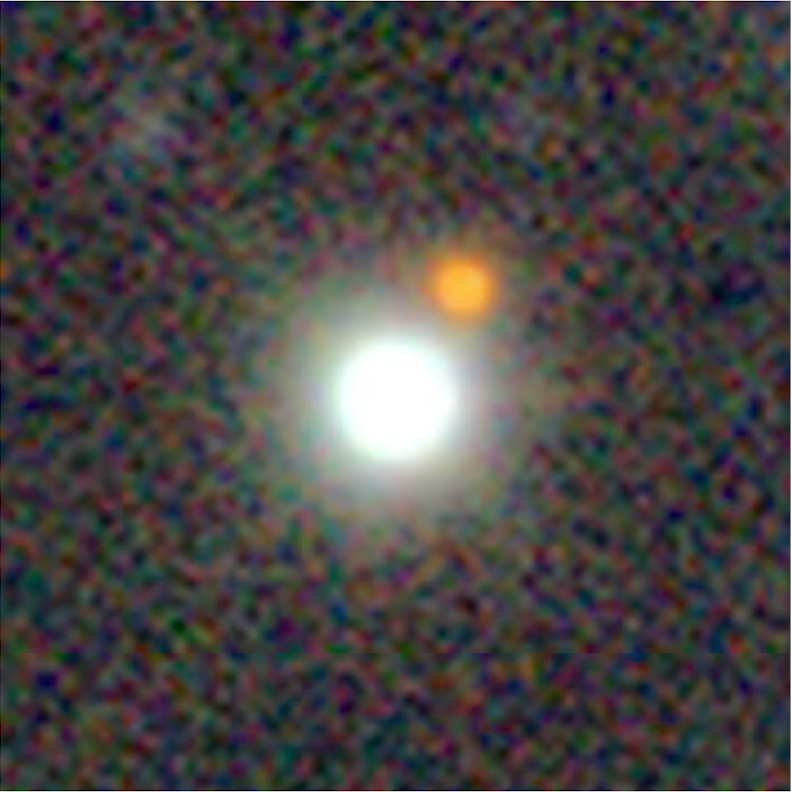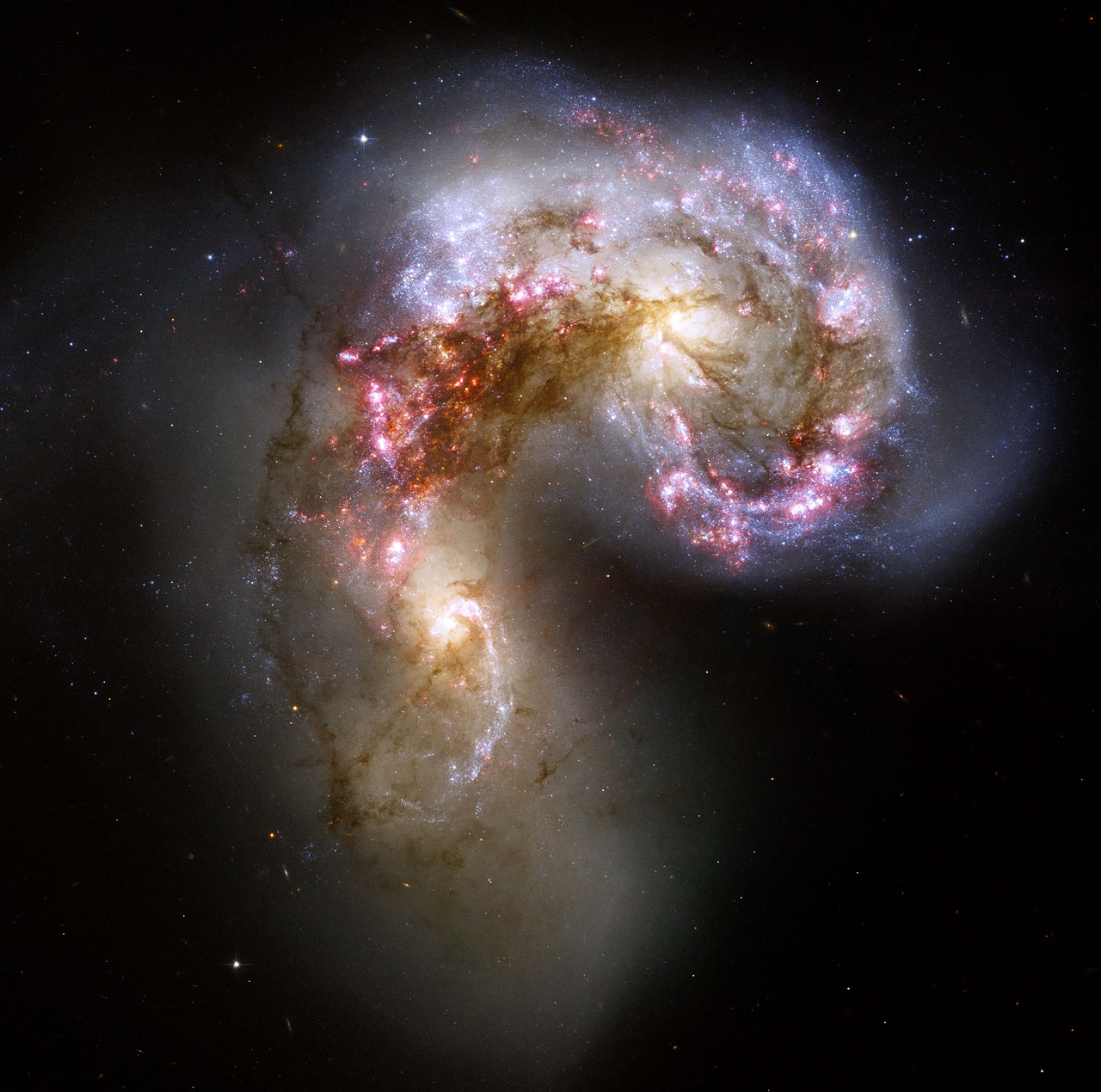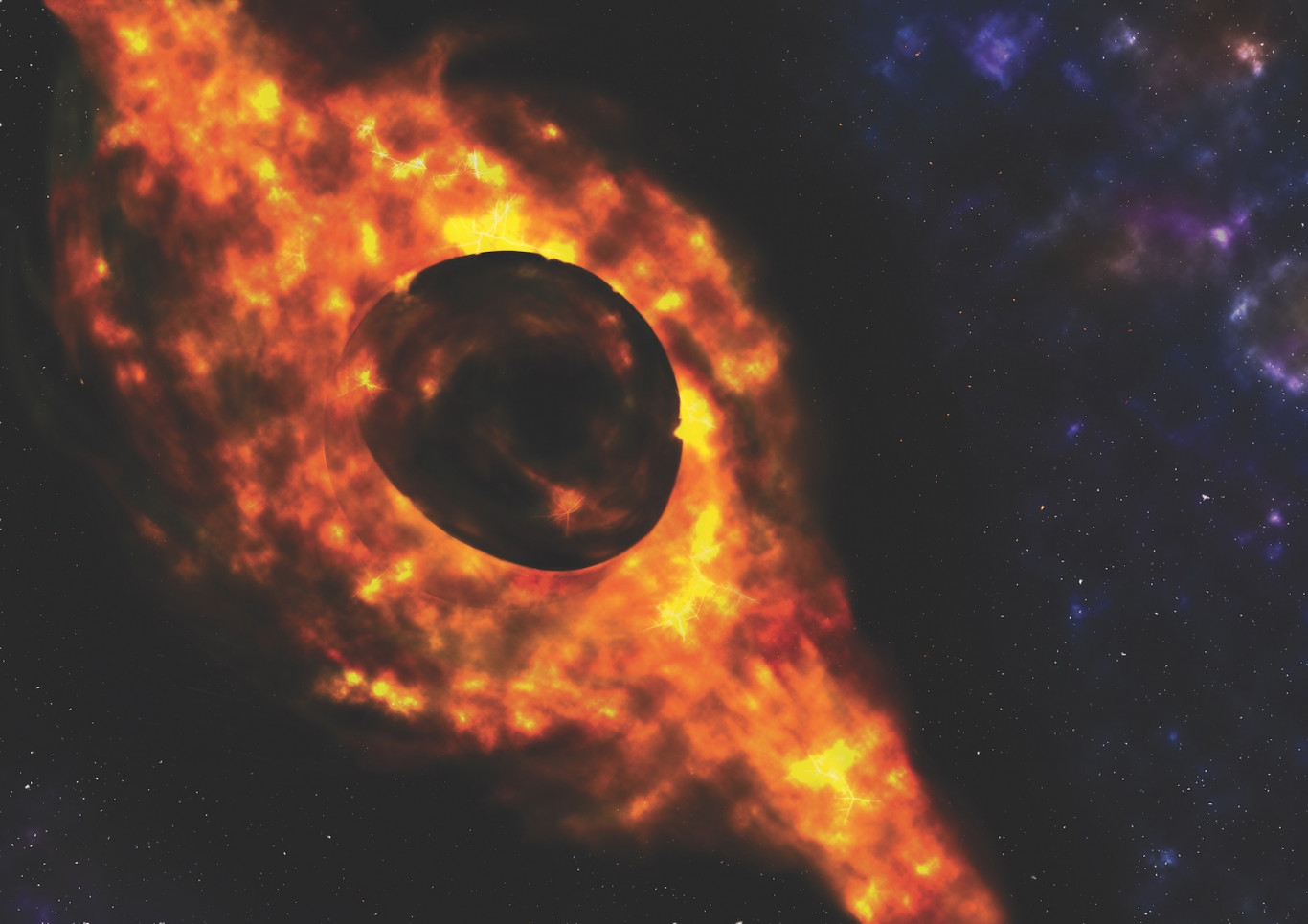Astronomers have identified the brightest object ever seen in the universe, illuminating the universe 20,000 times brighter than our galaxy. The quasar, codenamed J0529-4351, is located more than 20 billion light-years away, and studying it could help us understand just how massive the supermassive black holes that power quasars are.
“A bright quasar is basically a [szupermasszív] “An accretion disk around a black hole, similar to a storm system, whose matter will be swallowed up by the black hole over time,” Christian Wolff of the Australian National University told Qubit. astronomerWho was with his teammates last year Discover The object and its most important characteristics were mentioned in a recent research. Supermassive black holes exist at the centers of most galaxies, including the Milky Way, but their accretion disks rarely reach the typical luminosity of quasars.
photo_camera
Technical illustration of quasar J0529-4351
Illustration: Australian National University/Christy Roberts
It measures the quasar with the largest accretion disk ever seen in visible light Gaia And infrared rays wise It was identified in a quasar search survey collecting data from space telescopes (All-sky BRIght, Complete Quasar Survey, or AllBRICQS). Nature astronomy Published in the magazine on Monday The research reveals the black hole mass of this record-breaking object, and lays the foundations for future measurements that can be used to make them more precise.
It is 500,000,000,000,000 times brighter than the sun.
“The light from the J0529-4351 accretion disk is 500 trillion times stronger than the light of our Sun,” Wolf wrote. According to the astronomer, such an amazing level of luminosity and energy production could only be created if the already massive black hole was growing at incredible speed and swallowing up a mass equivalent to that of the Sun every day. The black hole's accretion disk can be up to 7 light-years in diameter, larger than the entire disk Our solar system.

photo_camera
Quasar J0529-4351 (center) in the Dark Energy Camera Legacy Survey image
The redshift of a quasar (the increase in the wavelength of light due to the expansion of the universe) is 3.96, which means the quasar's light has been heading toward us for 12 billion years. “This also means that this black hole stopped growing a long time ago. And in the nearest universe, we see that present-day black holes are mostly dormant giants,” the researcher wrote.
So far, astronomers have identified a total of one million quasars in the universe. The brightest of these objects are also the rarest, so finding them represents a great challenge, especially since they must be separated from the stars of the Milky Way, which look similar in images. However, the discovery of J0529-4351, according to the researchers, indicates that sky survey data are hiding many discoveries, and the combination of Gaia and WISE measurements makes identifying quasars much easier.
It may be the brightest quasar ever found
In some cases, the light of distant quasars toward us can be amplified by massive galaxies through the phenomenon of gravitational lensing. To rule this out in the case of J0529-4351, researchers looked closely at measurements by the Gaia Space Telescope, which found no strong evidence of gravitational lensing, such as quasar image doubling.
Accordingly, J0529-4351 is really as bright as it looks, and there is no indication that it has become very bright only recently, for example due to relativistic rays. Based on the long-term data series, the quasar's brightness has changed by only 15% in the past six years, which is not surprising for similarly bright quasars, according to the researchers.
Researchers examined the quasar in detail using the Very Large Telescope (VLT) of the European Southern Observatory (ESO) in Chile in visible and near-infrared light. Using a telescope equipped with an 8.2-meter diameter mirror, they observed that the accretion disk was unimaginably large, 2 x 1041 It emits watts of energy. If we just look at this value, it means that the black hole eats up 413 days of mass every year. Using a more precise model that takes into account similar black hole disks, the researchers' final estimate of this accretion rate was 370 solar masses per year.
How was the mass of a supermassive black hole measured?
For about half of the 1 million quasars identified, the mass of the associated black hole is also known. But how can researchers conclude this? Wolf wrote that all of these calculations depend on measuring the speed of movement of the “storm clouds” in the outer part of the accretion disk and knowing the size of their orbits around the black hole. The former can be determined using infrared spectroscopy, but estimating the size of its orbit (i.e. the accretion disk) is a much more difficult task.
“For this object, we say the black hole has a mass of 17 billion solar masses, but this is only our best estimate, and the uncertainty range is from 5 to 50 billion solar masses,” the researcher wrote. Currently, the size of the accretion disk can be inferred from more detailed data for smaller quasars in galaxies closer to the Milky Way. According to Wolf, the properties of objects tens of times larger, hundreds of times more violent, and even more distant must be deciphered by the limited known properties of these “mini-quasars.”

photo_camera
The supermassive black hole at the center of galaxy M87 in an image from the Event Horizon radio telescope system
Image: Event Horizon Telescope Collaboration
In the early stages of the universe's existence, there was still significant turbulence, and collisions between stars in galaxies were common. According to Wolff, the main beneficiaries of this were black holes, which in this era of “feeding fever,” in which we also see J0529-4351, were still capable of accommodating a lot of matter. Researchers don't know how long a record black hole rate of engulfment could last, but their current thinking is that this level of accretion may be more episodic.
This can be caused by chaotic motions in the quasar's host galaxy, for example when the orbits of stars change due to the merger of several galaxies and the entry of a large amount of gas into the newly formed galactic center. But with the development of the universe, according to the researcher, the era of “feeding fever” ended. Stars form from gas in galaxies, and stars mostly orbit supermassive black holes that sleep at the core of galaxies in ordered orbits, into which they rarely collapse.

photo_camera
Colliding galaxies in a Hubble Space Telescope image
Image: Image source: NASA, ESA, Hubble
With supermassive black holes, we can understand how galaxies are born
According to the astronomer, based on its apparent size, this new object could be the largest quasar ever discovered – ten times larger than what was observed by the GRAVITY instrument of the VLTI observing system created by linking the VLT telescopes in Chile. A successor to the instrument currently in development, GRAVITY+, is expected to be delivered next year, and Wolf says it will be able to observe some distant quasars, including the newly discovered J0529-4351. “Our quasar fits within the boundaries of the instrument and is well suited for these observations,” he wrote, meaning the new instrument can reveal the spatial extent of the “storm disk” around the black hole for the first time.
By obtaining a detailed image of the accretion disk, the quasar's black hole mass can be estimated more accurately, the researcher wrote. If this is done, it will be possible to verify the current method used to estimate the mass of black holes using quasars at their extremes. “This could help close the debate on all the extrapolations we currently rely on, thus determining a mass range of half a million quasars and black holes. This would certainly be an important step forward in cosmology,” Wolf wrote.
According to the astronomer, the discovery of the new quasar will also help us better understand the diversity of black holes, which may shed light on the origin of the objects. “We have a study that has not yet been peer-reviewed, in which we see that the cores from which the black holes of quasars formed must be very massive,” he wrote. “This could indicate that galaxies formed after the black holes and not the other way around,” he wrote. Although he added that This is still just speculation, but it is believed that more and more people support this scenario.












































